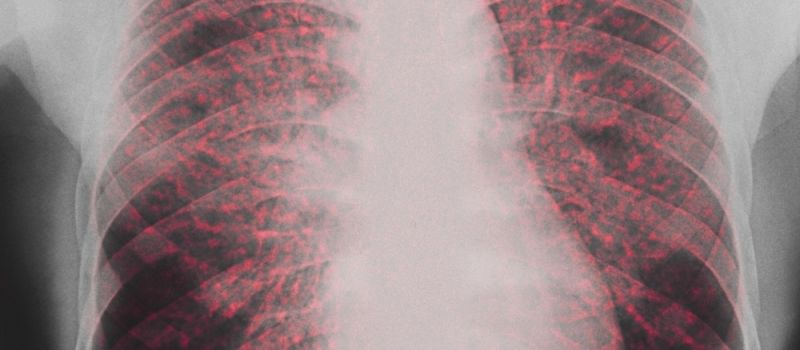Sarcoidosis and its effects on the human body
By Canada Cloud Health | Published Wednesday 06 January 2021

Sarcoidosis is an inflammatory disease with its major characteristic being that it causes inflammation in multiple organs including the lungs and the lymph nodes.
Much research done on Sarcoidosis was done during this past century with extensive testing and linking of clinical manifestation with the disease. Before that, the earliest case was described way back in 1878 by Hutchinson and the second case was reported in 1898 of one Mrs. Mortimer. This disease was named in the previous century as due to its multiple clinical manifestations it was often mixed up with other diseases.
What are the causative agents of this disease?
There is no conclusive evidence as to what specifically causes sarcoidosis but a working hypothesis is that it affects those individuals who have a genetic predisposition and have their immune response altered due to exposure to certain chemicals or infectious agents. Infectious agents such as Mycobacteria species have been associated with sarcoidosis after a meta-analysis of several studies. Auto immune diseases have been linked with increasing chances of susceptibility to Sarcoidosis but there is no conclusive evidence present however some evidence supports that this disease is a consequence of TH 1 lymphokine prevalence.
What are its signs and symptoms?
Most patient’s complaint of dry cough, fatigue and shortness of breath as these are some of the common symptoms. Most patients present a variety of symptoms most of which are derivative to their preexisting medical conditions. Swollen and tender Lymph glands in the neck, armpit and groin indicate that the lymphatic system is under stress which along with symptoms like pain in joints or other bony areas (due to formation of cysts) indicate towards sarcoidosis.
Further tests are required for diagnosing this disease which include Chest X-ray scan which may show cloudiness upon examination. X-ray scans are also used for determining Lymphadenopathy (disease of the lymph nodes, in which they are abnormal in size or consistency). For a detailed analysis we can also use high resolution computerized tomography scans (HRCT Scan) to analyze the structures with detail. After x-ray and CT scans, a biopsy is done to during which a piece from the effected site is extracted which is then subjected to tests to rule out infection.
Stages of Sarcoidosis:
Almost 90% of patients suffering from sarcoidosis have some sort of Pulmonary involvement which is then diagnosed through chest X ray scan. During diagnosis, a physician will refer to your condition with a “Stage”. Stages are also used to categorize cases of Cancer on the basis of its severity (ex. Stage 4 cancer represents that cancer has spread to other tissues and is more invasive which will require more aggressive treatment). But in the case of sarcoidosis, stages are not used as an indicator of severity rather a method to specify which area of the body is effected by this disease. It is used by physicians to better understand the disease.
Stage 1 indicates that granulomas have formed in the lymph nodes. Stage 2 indicates that along with granuloma formation in the lymph nodes, Lungs are also involved. This creates a false impression that increasing stages depict an increasing trend in severity but this trend is completely broken down in stage 3 which indicates only the involvement of Lungs. Stage 4 of sarcoidosis indicates scarring of the lungs which means pulmonary fibrosis. Stage 4 is the most severe condition of sarcoidosis.
Treatment of Sarcoidosis:
Any medication that can be used to reduce inflammation is used in managing and decreasing the severity of sarcoidosis. The following are used in managing the symptoms:
1. Corticosteroids
Corticosteroids reduce inflammation. They are not related to other steroids like anabolic steroids which are the ones that are sometimes abused by athletes. Corticosteroids are used as a first line treatment of sarcoidosis. Treatment including corticosteroids decreases the severity of symptoms of sarcoidosis in most patients within two to three months. The most prescribed corticosteroid is prednisolone along with prednisone. Patients diagnosed with sarcoidosis will be required to take corticosteroids for five to six months as it does not produce effects right away. Like all drugs, these medications can cause a variety of side effects which include acne, increase in body weight , insomnia, mood swings, and decrease in bone density so the prescribing physician will gradually decrease the dose of medication after treatment is started. Primary aim is to minimize symptoms without useless prescribing of more corticosteroids than needed to manage the disease.
2. Immuno-suppressants
As this disease may be a result of an exaggerated response of the immune system, the regimen to suppress the immune system may lessen the severity of the symptoms and limit further organ damage. This therapy is used when corticosteroids are not effective which will result in prescribing physician to start you on other medications such as:
• Methotrexate
• Azathioprine
• mycophenolate mofetil
3. Anti-malarial Medications
These drugs are most possibly to be used in people who have skin or facial symptoms or a high level of calcium present in their blood. Antimalarial drugs that are used to treat sarcoidosis are:
• Hydroxychloroquine
• Chloroquine
4. Oxygen Therapy
People with severe lung sarcoidosis may need oxygen therapy along with other medication.
5. Organ replacement
Lung transplantation in which the replacement of a diseased part of lung or lungs with a healthy donor lung may be used to treat severe cases of lung sarcoidosis.
Life with Sarcoidosis
As sarcoidosis is better understood today, we have been able to create better regimens to manage this disease. The important aspect to understand and realize is that patients suffering from sarcoidosis must be considered members of this society and be involved in the day to activities so that they feel included. They must not be cast aside as keeping a positive mindset helps in keeping them committed to treatment regimen.



 Canadian Company
Canadian Company 



 Sign In
Sign In
 Home
Home 
 About Us
About Us 
 How to order
How to order 
 Products
Products 



